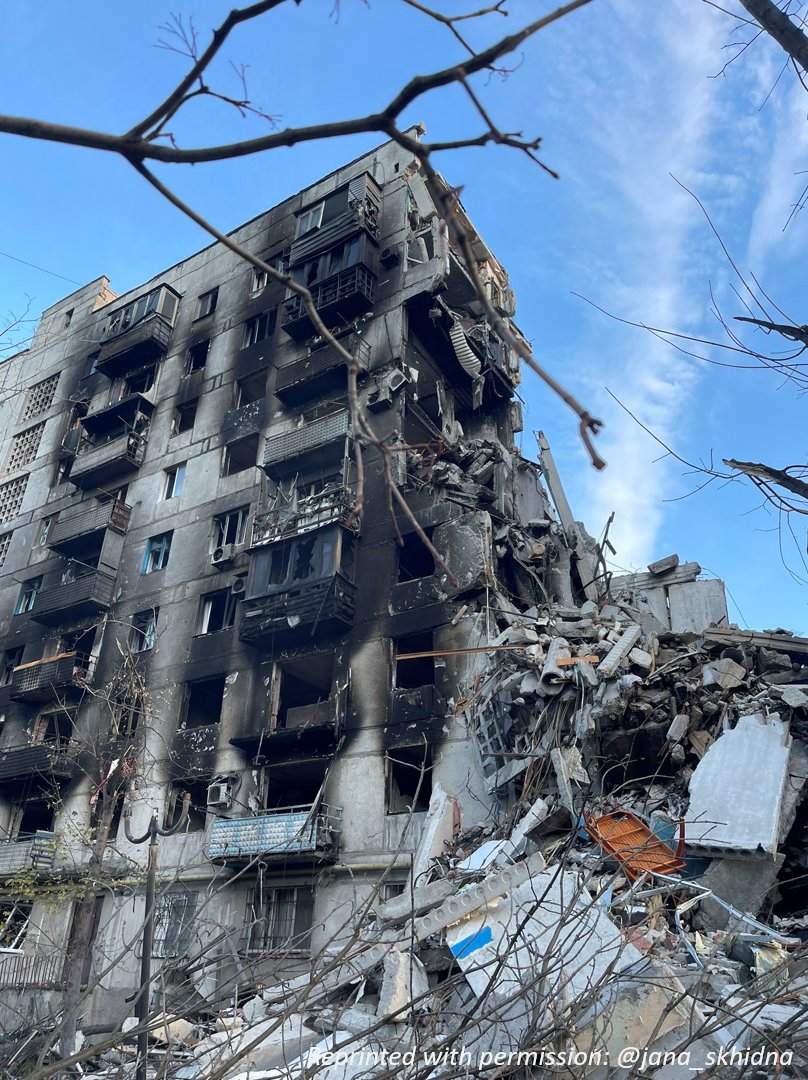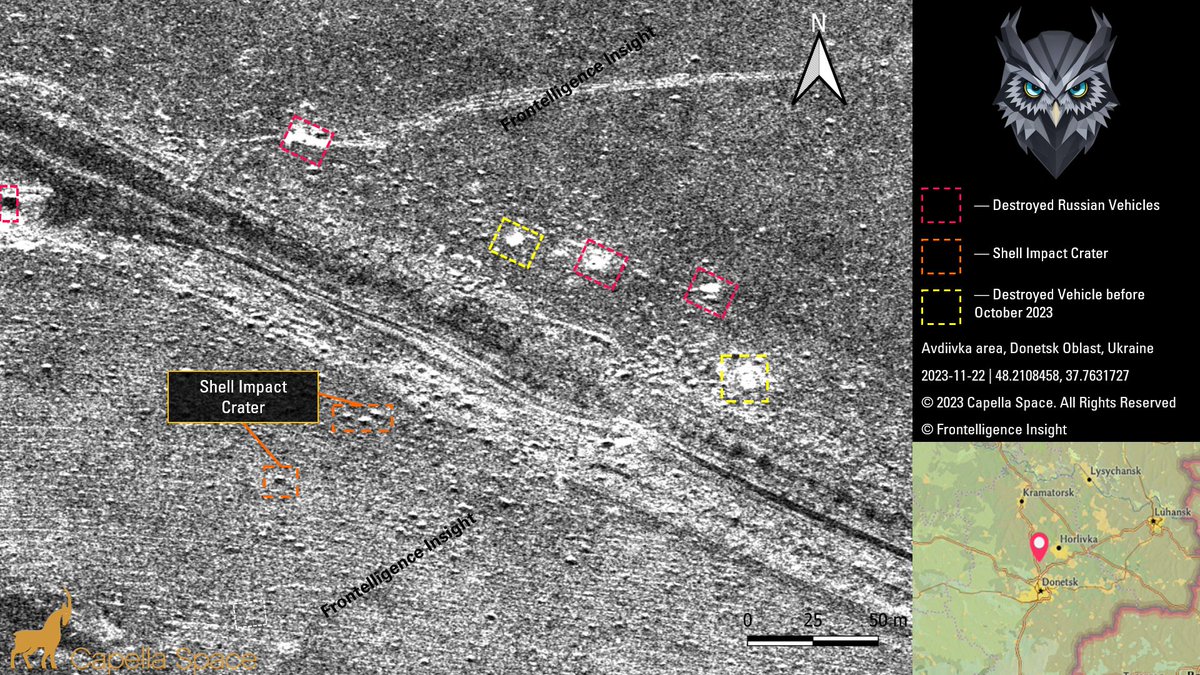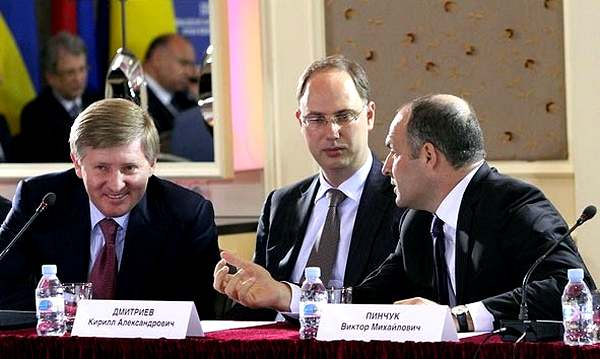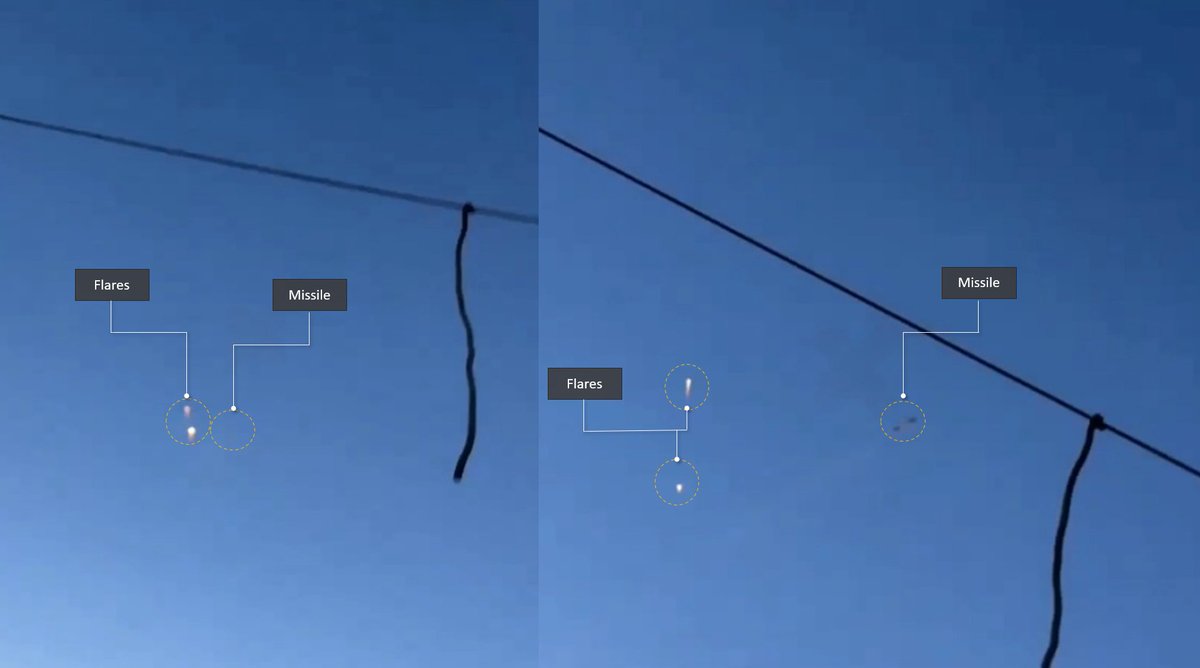Despite dense cloud cover blocking satellite, drone, and optical surveillance of the Avdiivka battlefield, our team continued the analysis using Synthetic Aperture Radar (SAR) systems. Here is what we learned about the current situation. 🧵Thread: 

2/ Before we move further, let's clarify what Synthetic Aperture Radar (SAR) is. It's a technology that employs radar to generate images of the Earth's surface. By capturing and processing reflected waves, SAR provides detailed imagery regardless of weather conditions or daylight 

3/
We combined SAR data with on-the-ground testimonials and open-source video materials to gain comprehensive insights.
Some Key Observations
- Vehicle Reduction: In contrast to the initial month of assaults, russian forces are employing fewer vehicles in smaller numbers.
We combined SAR data with on-the-ground testimonials and open-source video materials to gain comprehensive insights.
Some Key Observations
- Vehicle Reduction: In contrast to the initial month of assaults, russian forces are employing fewer vehicles in smaller numbers.

4/
- Tactical Shift: There's a notable increase in the use of small tactical groups, consistently moving in the same areas despite prior losses.
- Guided Aerial bombs: There is a consistent uptick in the use of guided aerial bombs by Russian forces.
- Tactical Shift: There's a notable increase in the use of small tactical groups, consistently moving in the same areas despite prior losses.
- Guided Aerial bombs: There is a consistent uptick in the use of guided aerial bombs by Russian forces.

5/
As we correctly predicted, worsened weather conditions have hindered russian overextended logistics routes. Consequently, this limitation made it difficult to develop initial successes, particularly in the northern sector of Avdiivka, notably around Berdychi.
As we correctly predicted, worsened weather conditions have hindered russian overextended logistics routes. Consequently, this limitation made it difficult to develop initial successes, particularly in the northern sector of Avdiivka, notably around Berdychi.

6/
Following an initial success north of Avdiivka, Russian forces extended their assaults for over a month. Despite tactical successes, they failed to establish persistent footholds in the AKHZ plant.
Following an initial success north of Avdiivka, Russian forces extended their assaults for over a month. Despite tactical successes, they failed to establish persistent footholds in the AKHZ plant.

7/
Recently, russians seized control of parts of the industrial zone south of Avdiivka. These gains were primarily attributed to continuous infantry assaults, posing potential challenges for Ukrainian defenders in the coming weeks
Recently, russians seized control of parts of the industrial zone south of Avdiivka. These gains were primarily attributed to continuous infantry assaults, posing potential challenges for Ukrainian defenders in the coming weeks
8/
Russian forces persist in deploying small tactical groups, despite a high mortality rate. This sustained tactic, where one group follows another, has the potential to exhaust Ukrainian troops and compromise their positions over time
Russian forces persist in deploying small tactical groups, despite a high mortality rate. This sustained tactic, where one group follows another, has the potential to exhaust Ukrainian troops and compromise their positions over time
9/
The deployment of cluster bombs, as well as 250-1500kg bombs equipped with the UMPK kit poses a significant problem. Despite them being inaccurate, they are still dangerous due to the big explosive charge, particularly problematic in urban areas, leading to severe destruction
The deployment of cluster bombs, as well as 250-1500kg bombs equipped with the UMPK kit poses a significant problem. Despite them being inaccurate, they are still dangerous due to the big explosive charge, particularly problematic in urban areas, leading to severe destruction

10/
In simpler terms, facing substantial losses and challenging weather, russians ramped up offensives using readily available resources—infantry, artillery, and aerial bombs.
In simpler terms, facing substantial losses and challenging weather, russians ramped up offensives using readily available resources—infantry, artillery, and aerial bombs.

11/
They shifted their focus to AKHZ, Berychi, and the southern industrial zone, reducing the emphasis on the initial plan to encircle Avdiivka with mechanized forces—a development we anticipated.
They shifted their focus to AKHZ, Berychi, and the southern industrial zone, reducing the emphasis on the initial plan to encircle Avdiivka with mechanized forces—a development we anticipated.

12/
Predicting future developments is challenging, hinging on russia's ability to persist with deploying infantry without adequate cover. This attritional approach, aimed at wearing down defenders, makes it hard to provide any solid estimates.
Predicting future developments is challenging, hinging on russia's ability to persist with deploying infantry without adequate cover. This attritional approach, aimed at wearing down defenders, makes it hard to provide any solid estimates.
13/ If you found this post valuable, kindly consider liking and sharing the first message in this thread. Additionally, please follow us for future updates.
This analysis and images are made possible by your generous donations and subscriptions.
This analysis and images are made possible by your generous donations and subscriptions.
If you'd like to support the defenders of Avdiivka, I recommend checking @jana_skhidna , as she consistently raises funds for brigades and units in the area.
https://twitter.com/jana_skhidna/status/1727754686260814199
• • •
Missing some Tweet in this thread? You can try to
force a refresh














